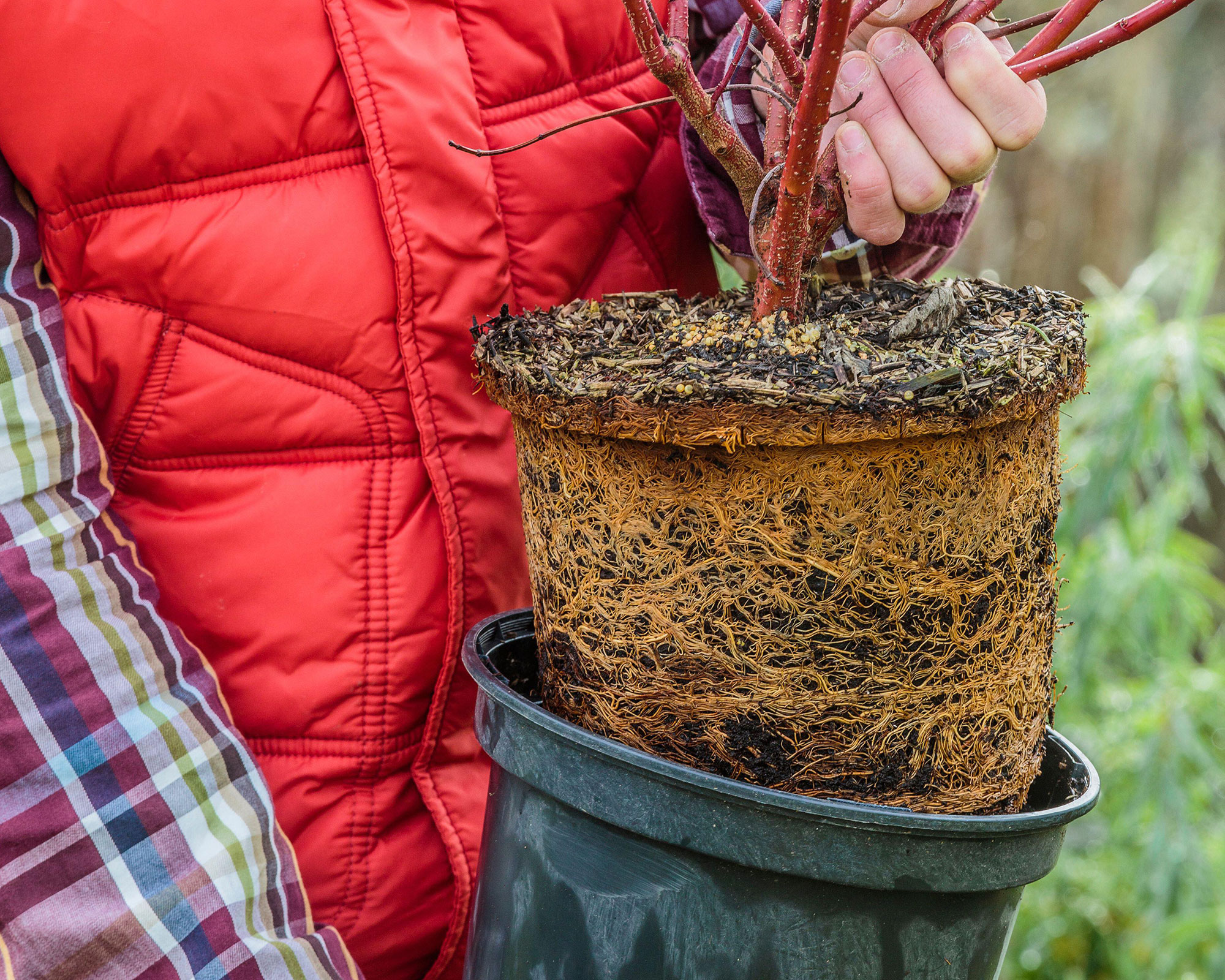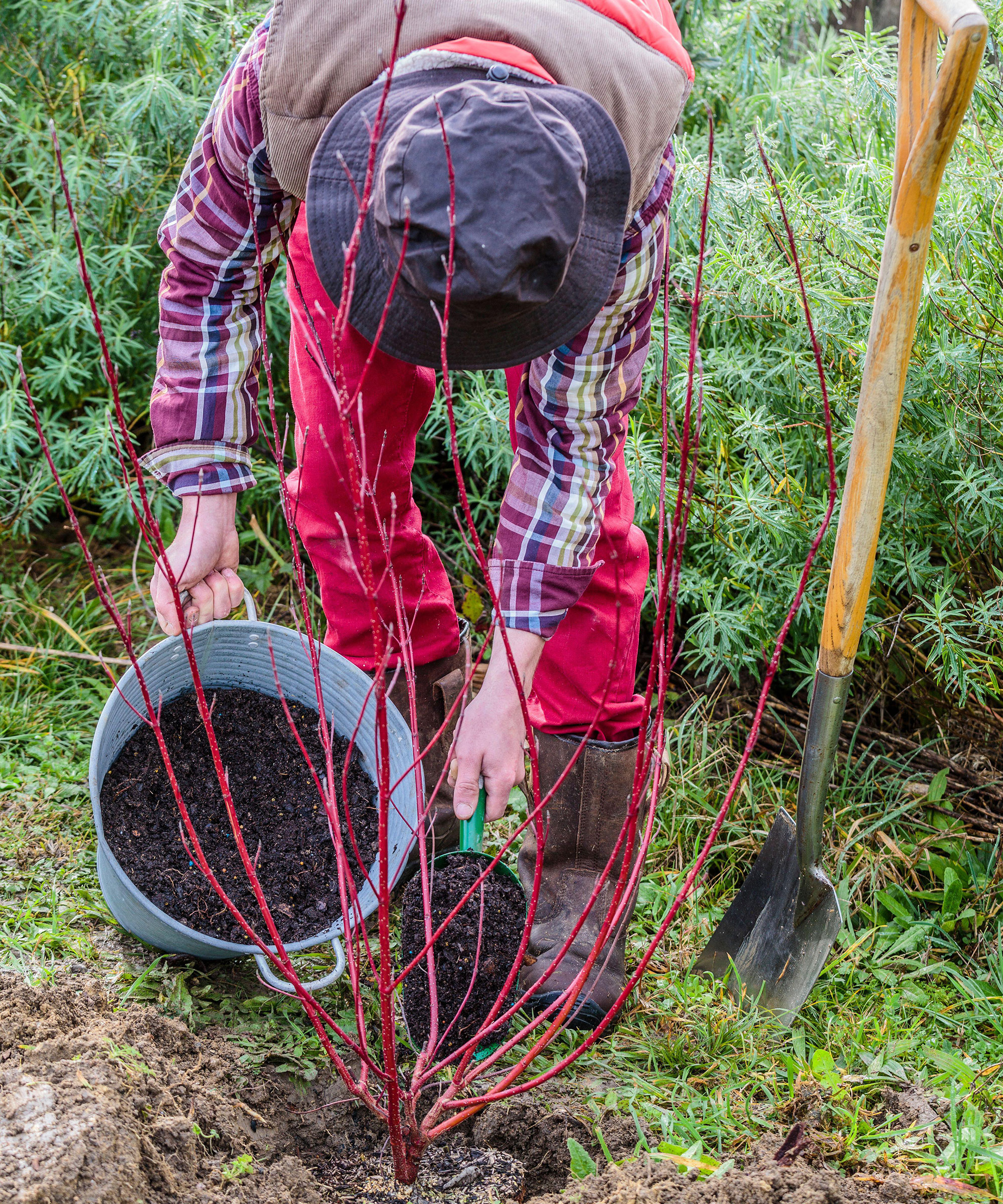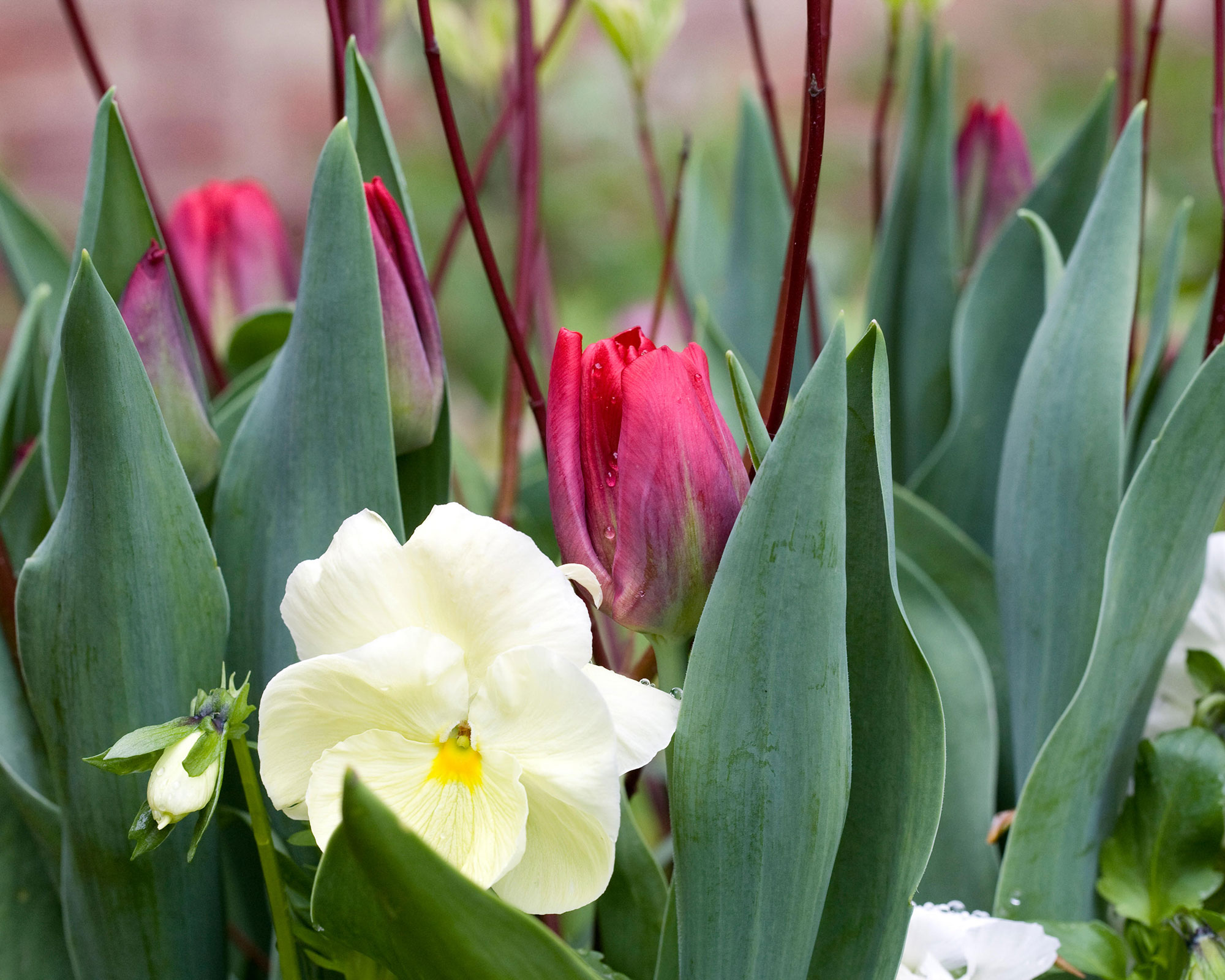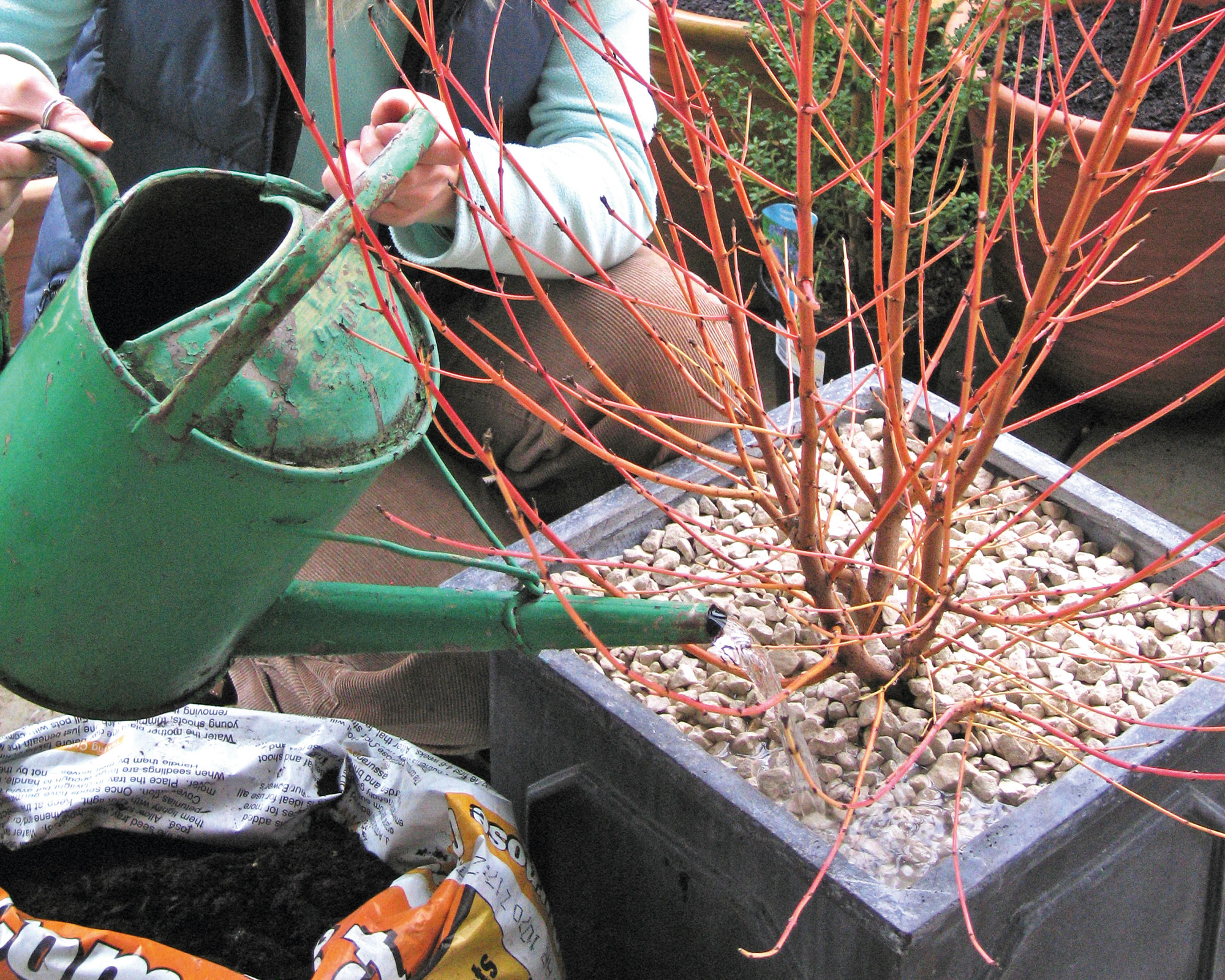Red twig dogwood plant care and growing tips: expert advice for this stunning shrub
Find out how to grow and care for the spectacular red twig dogwood shrub and add blazing color and seasonal interest to your landscaping


A popular deciduous shrub, red twig dogwood add beauty to gardens in summer and winter. It's grown mainly for its bright and brilliant winter twigs that usually come in shades of orange to bright red to deep crimson, but the twigs can also be yellow, or even almost black, and make a fine winter feature, especially in the snow.
It's worth noting that there are two main kinds of dogwood. Both are beautiful, but they’re very different. Flowering dogwoods make fine small deciduous trees, with showy pink or white flowers and fiery, yellow or crimson autumn leaf color. Red osier, or red twig, dogwood, on the other hand, are the shrubs with vibrant twigs.
As one of the best shrubs for small gardens, red twig dogwood are largely fuss-free and among the toughest shrubs for winter color. They can be kept to 3ft (90cm) in height by annual pruning or allowed to mature at any height up to 8ft (2.4m). They are, however, at their most effective when pruned annually and kept small and manageable.
If left unpruned, red twig dogwood will bring us white spring flowers, followed by clusters of white or black fall berries. In many varieties, the foliage turns wine-red before falling.
Taking the low temperatures in our coldest zones in their stride without any special protection, red twig dogwoods are happy in zone 2 to zone 8 and in a variety of soils, and situations.
When to plant red twig dogwood
Planting time for red twig dogwood depends mainly on your first and last frost dates. The fall and spring are usually the best times, and you should never plant them in your garden borders when the ground is frozen.
Planting in early fall, before your first frost, allows the plants time to settle in and become established before the ground freezes. Alternatively, make it one of your spring garden jobs and plant in spring as soon as the ground has thawed. Be guided by your own conditions.
In the US, winter planting may be possible in zone 7, and is usually fine in zone 8. In zone 9 the summers are too hot for red twig dogwoods to thrive.
In areas with cool summers, red twig dogwoods can also be planted in summer but it’s important to make sure that the plants do not dry out as longer summer days and warm summer temperatures dry their roots out more quickly.

Healthy red twig dogwood with a robust root system will soon bed into your garden
How to plant red twig dogwood
The day before you plan to plant your new red twig dogwood, fertilize it by adding plant food to a watering can of water. Check the dilution rate on the pack, then water the plant well. This will give it a flying start before you follow the below planting method.
- Dig a hole twice the width of the pot in which your dogwood is growing, and 50% deeper than the depth of the pot.
- Use a garden fork to loosen the soil in the base of the hole, add garden compost and mix this with your garden soil. Firm well with your foot.
- Remove the plant from the pot and stand it in the hole. Add or remove dirt so that the rootball is just a little below the general soil level.
- Mix some garden compost with the soil and use this to fill the space around the roots. Follow our guide to composting if you want to make your own. Firm well with your hands. Feed again.
- Finally, mulching with chipped or shredded bark or other mulch will retain moisture and deter weeds.

Fall and spring are the best time to plant red twig dogwood when the soil is warm and damp
Where to plant red twig dogwood
Red twig dogwood is an exceptionally cold tolerant plant, making it one of the best winter garden plants. It will thrive from zone 2 to zone 8 in the US, and there is a native American species that grows wild in Alaska, which proves the point.
They prefer situations that do not dry out in the summer and will tolerate wet or frozen conditions through the winter. It pays to keep this in mind when choosing planting companions.
Red twig dogwood will grow well in full sun, or in part shade, but twig color is best in full sun and plants become stretched and weak when grown in full shade.
In winter gardens, these are essential shrubs for the variety in their twig coloring – in spite of their name. Bringing a change of style to urban and suburban yards, they also fit in well with perennials and provide a pretty picture when combined with spring flowering bulbs like daffodils and different types of tulip.

The brilliant stems of red twig dogwood look amazing emerging in between spring bulbs
How to propagate red twig dogwood
Once you have one plant of red twig dogwood, it’s not difficult to make more. The best time to start is in late fall, immediately after the leaves have dropped. This is how to do it:
- Using your best secateurs, cut a few of the stems off near the base of the plant.
- Trim each below a leaf joint. At intervals along the stem you’ll see the pairs of small buds opposite each other where the leaves used to be. Snip just above a leaf joint about 9in (23cm) from the base to form a cutting. If the stem is long enough, repeat the process but discard the fine whippy tips.
- In a bright corner of the yard, use your garden spade to make a narrow slit in the soil. Insert the cuttings in the slit 6in (15cm) apart, right way up.
- When the cuttings are in place, use your foot to press down on the soil and close the slit.
- Do nothing more until spring unless conditions are very dry, when watering will be helpful. Some, perhaps all, will start to shoot in spring showing that they’re rooting.
- In the autumn, dig them up and plant them promptly in your chosen place.

Dig a trench in a sunny, sheltered spot for rooting your cuttings
Pruning red twig dogwood
Pruning shrubs in the right way makes a huge difference to their effectiveness and also governs the size of the plant, and red twig dogwood are no exception.
To produce the most twigs and the best colored twigs, prune every year or every second year. Make it one of your winter jobs in the garden as late winter, or in early spring when the first shoots are starting to appear, is the best time.
Use pruners to cut the plants down hard, within two or three inches of the base. This will inspire a surge of new spring growth, and it’s this growth that will produce the colorful twigs the following winter. Pruned in this way, most varieties will reach 3-4ft (90cm-1.2m) by winter.
Another approach, if you prefer a plant that will stand out in a large garden, is to prune in this way every second year. In their second year the plants may reach 5-6ft (1.5-1.8m).
If you have plenty of space, leave the plant unpruned and, depending on the variety, plants will reach 8-10ft (2.4-3m).

Correct pruning keeps red twig dogwood colourful and in an attractive shape
Red twig dogwood care tips
After pruning, the next most important thing when looking after your red twig dogwood is ensuring that your plants never suffer from drought in the summer.
In their natural wild homes they grow in soil that tends to be moist in summer so it’s important to replicate that by watering plants regularly when needed. This is one of the reasons for using plenty of garden compost when planting – it holds moisture.
In some areas, where summer rainfall is low, you may need to water once a week. In other areas watering less often, only in a dry spell, will usually be sufficient. Your dogwoods will not die if they’re dry for a week. It’s more that they will grow less strongly and become spindly.
Another idea to help keep the roots moist is by mulching. Use garden compost, or chipped or shredded bark in your favourite color. But think twice about chipped bark if you’re growing hostas nearby. Slugs love to hide among the chips during the day, then slither out at night to feed on the hosta leaves.

Red twig dogwood naturally grow in damp soil so make sure you keep yours watered well

Graham Rice is a garden writer who has won awards for his work online, and in books and magazines, on both sides of the Atlantic. He is a member of a number of Royal Horticultural Society committees and the recipient of the 2021 Garden Media Guild Lifetime Achievement Award.
